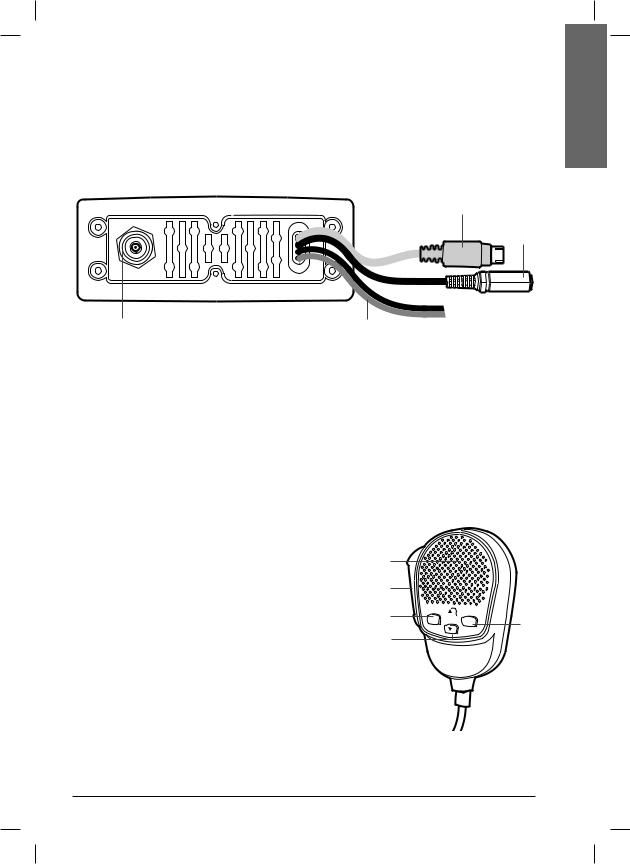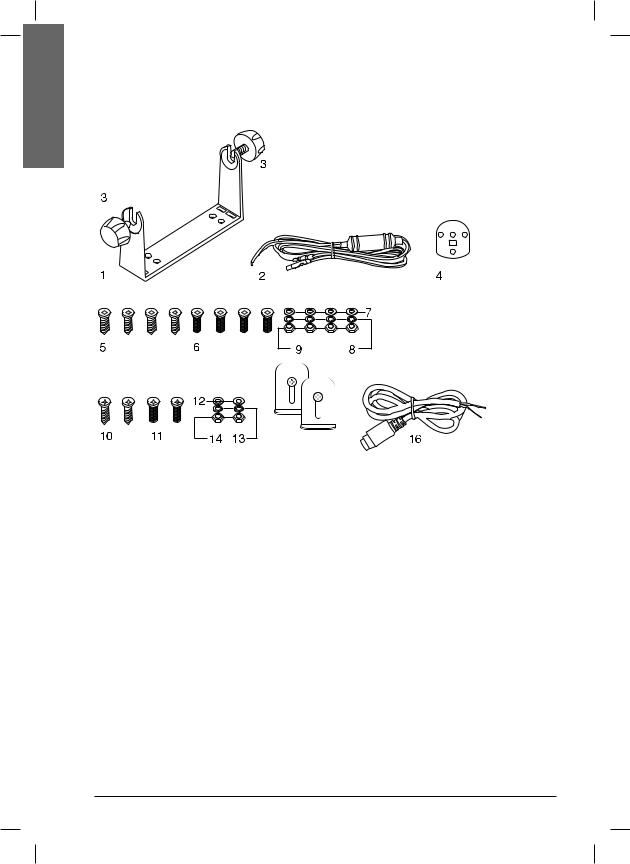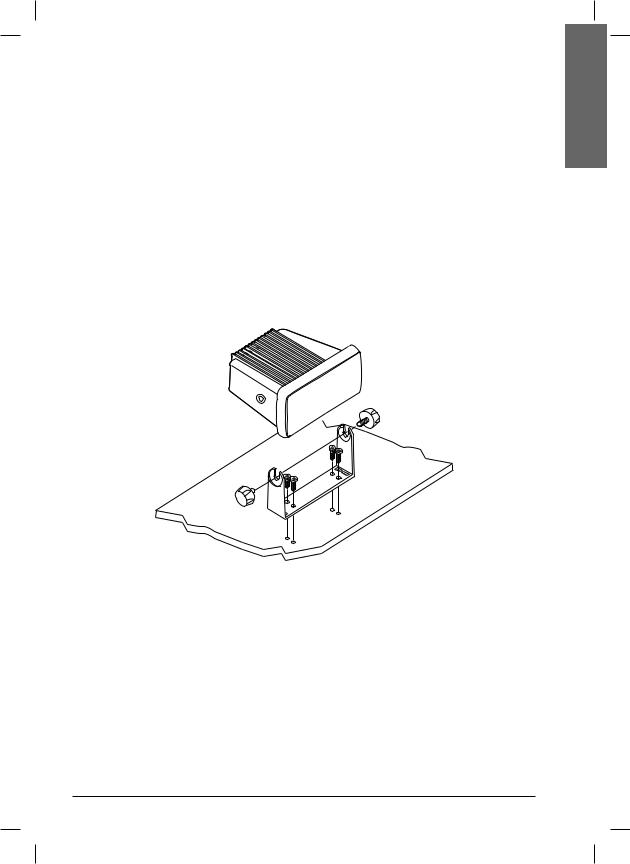MIDLAND Neptune 100 User Manual

INDEX |
|
|
1. ABOVE ALL... SAFETY!........................................................................................................... |
3 |
|
1.1 |
Symbols used................................................................................................................... |
3 |
1.2 |
Warnings.......................................................................................................................... |
3 |
1.2.a |
General............................................................................................................................. |
3 |
1.2.b |
Radiofrequency/installation.............................................................................................. |
3 |
1.2.c |
Automatic Transmitter Identification System (ATIS)........................................................ |
3 |
1.2.d |
Environmental.................................................................................................................. |
4 |
1.3 |
ETSI Information.............................................................................................................. |
4 |
1.4 |
Assistance........................................................................................................................ |
4 |
1.5 |
Manual Notes................................................................................................................... |
4 |
2. INTRODUCTION........................................................................................................................ |
5 |
|
2.1 |
Generalities...................................................................................................................... |
5 |
3. DESCRIPTION OF CONTROLS AND CONNECTORS............................................................ |
6 |
|
3.1 |
Front panel....................................................................................................................... |
6 |
3.2 |
Back panel (connections)................................................................................................. |
7 |
3.3 |
Microphone....................................................................................................................... |
7 |
4. INSTALLATION......................................................................................................................... |
8 |
|
4.1 |
Contents of package........................................................................................................ |
8 |
4.2 |
Location for the transceiver.............................................................................................. |
9 |
4.3 |
Mounting of transceiver.................................................................................................... |
9 |
4.4 |
Adjustment of angle........................................................................................................ |
10 |
4.5 |
Installation of the antenna/electromagnetic exposure.................................................... |
10 |
4.6 |
Mounting of Microphone................................................................................................. |
10 |
4.7 |
Connections.................................................................................................................... |
11 |
4.7.a |
Power Supply.................................................................................................................. |
11 |
4.7.b |
GPS device..................................................................................................................... |
11 |
4.7.c |
Antenna........................................................................................................................... |
11 |
5. BASIC OPERATION................................................................................................................ |
12 |
|
5.1 |
Turning NEPTUNE 100 on/off........................................................................................ |
12 |
5.2 |
Volume adjustment......................................................................................................... |
12 |
5.3 |
Squelch Regulation........................................................................................................ |
12 |
5.4 |
Selecting an operating channel...................................................................................... |
12 |
5.5 |
Transmission and reception........................................................................................... |
12 |
5.6 |
Selecting high and low transmission power................................................................... |
13 |
5.7 |
Instant recall of channel 16............................................................................................ |
13 |
5.8 |
Display/keypad lighting................................................................................................... |
13 |
6 . SCANNING FUNCTIONS........................................................................................................ |
14 |
|
6.1 |
Channel scanning.......................................................................................................... |
14 |
6.2 |
Dual Watch and Triple Watch......................................................................................... |
14 |
6.3 |
MEM function................................................................................................................. |
15 |
7. USE WITH GPS....................................................................................................................... |
16 |
|
7.1 |
Function.......................................................................................................................... |
16 |
7.2 |
GPS information on the display...................................................................................... |
16 |
ENGLISH
1

ENGLISH
8. DIGITAL SELECTIVE CALLING (DSC).................................................................................. |
17 |
|
8.1 |
Introduction..................................................................................................................... |
17 |
8.2 |
Mobile Marine Identification Service (MMSI).................................................................. |
17 |
8.3 |
Navigating the DSC menu.............................................................................................. |
17 |
8.4 |
Individual call (ROUTINE TO)........................................................................................ |
17 |
8.5 |
Group calling (Group Call).............................................................................................. |
18 |
8.6 |
General call to all ships (ALL SHIP SAFETY – ALL SHIP URGENCY)......................... |
18 |
8.6.a Sending a call to all ships............................................................................................... |
18 |
|
8.7. DSC DISTRESS call......................................................................................................... |
19 |
|
8.7.a Sending a DISTRESS call.............................................................................................. |
19 |
|
8.8 |
Position request................................................................................................................. |
19 |
8.9 |
Stand By option.................................................................................................................. |
20 |
9. Receiving a DSC call....................................................................................................... |
20 |
|
9.1 Receiving a distress call.................................................................................................... |
20 |
|
9.2 Individual call..................................................................................................................... |
20 |
|
10. CUSTOMIZATION.................................................................................................................. |
21 |
|
10.1 |
Log (list of registered calls)............................................................................................ |
21 |
10.2 |
Dir” (Entries in the directory) ......................................................................................... |
21 |
10.3 |
GPS................................................................................................................................ |
22 |
10.4 |
GPS select..................................................................................................................... |
22 |
10.5 |
“Beep” (Enable/disable keypad beep)............................................................................ |
22 |
10.6 |
Display/keypad backlight................................................................................................ |
23 |
10.7 |
Band edit........................................................................................................................ |
23 |
10.8 |
LCD contrast.................................................................................................................. |
23 |
10.9 |
MMSI (Setting of personel MMSI code and MMSI group code)..................................... |
23 |
10.10 |
“ATIS” (Setting of ATIS code and activation –deactivation of |
|
|
automatical transmission)............................................................................................... |
24 |
11. Programming and selection of private channels.......................................... |
25 |
|
12. MAINTENANCE..................................................................................................................... |
25 |
|
12.1 Maintenance and warnings............................................................................................. |
25 |
|
13. Troubleshooting........................................................................................................... |
26 |
|
14. TECHNICAL SPECIFICATIONS:.......................................................................................... |
27 |
|
14.1 |
Transmitter..................................................................................................................... |
27 |
14.2 |
Receiver......................................................................................................................... |
27 |
15. Frequency Table............................................................................................................ |
28 |
|
2

1. ABOVE ALL... SAFETY!
1.1 Symbols used
For ease and convenience of viewing, NEPTUNE 100 uses symbols to highlight urgent situations, practical advice, and general information.
Warnings such as this, shown using an open hand symbol, indicate a crucial description regarding technical repairs, dangerous conditions, safety warnings, advice and/or important information. Ignoring these symbols may result in serious problems and/or damage and/or personal injury.
Notes such as this one indicate practical advice that we suggest be followed for optimal performance with Neptune 100.
1.2 Warnings
1.2.a General
This device has been tested for compliance with Class D digital marine device limits. These limits were created to allow for reasonable protection against damaging interference.
This device is to be used solely as an aid to navigation. Its settings may be influenced by diverse factors, such as defects or malfunction of the device, environmental conditions or improper use.
It is the user’s responsibility to observe reasonable prudence and judgement in navigation, and as such this device should not be considered a substitute for this reasonable prudence and judgement.
Do not open the radio for any reason! NEPTUNE 100’s precision mechanics and electronics require expertise and specialized equipment; for the same reason, the radio should under no circumstances be realigned as it has already been calibrated for maximum performance. Unauthorized opening of the transceiver will nullify the warranty.
1.2.b Radiofrequency/installation
Midland recommends following the requirements for prevention of radiofrequency exposure. Unauthorized changes or modifications to this device may invalidate conformity to the ETSI Regulations.
This VHF DSC transceiver generates and irradiates electromagnetic energy (EME) at radiofrequency (RF), and as such must be installed and placed in operating conditions that are in conformity with the instructions contained in this manual and with current regulations. Not following these instructions can cause personal injury and/or malfunction of the device.
Do not use NEPTUNE 100 before connecting a suitable antenna that is in perfect working condition – although NEPTUNE 100 is protected, this may seriously damage the stages of transmission power.
Do not use transmit before ensuring proper connection of the antenna. During transmission, remain at a minimum distance of 1mt from the antenna.
1.2.c Automatic Transmitter Identification System (ATIS)
Your marine transceiver may activate, if necessary, the ATIS function. The ATIS function may be activated when using the transceiver within the internal navigable waters of
Europe which require the automatic transmission of identification. For further details, please contact your local authorities.
ENGLISH
3

ENGLISH
1.2.d Environmental
Pay attention to ambient conditions – although NEPTUNE 100 is designed to operate under the most severe conditions, it is important to avoid exposure to environments that are excessively humid or dusty, or to temperatures outside the –15 to +55°C range. Also avoid exposure to direct sunlight.
Avoid jarring and excessive vibration – NEPTUNE 100 is built to resist mechanical shock and vibration as long as these are within the norm for any electrical device.
Do not use this device in potentially explosive environments. A single spark may cause an explosion.
1.3 ETSI Information
ETSI (European Telecommunications Standards Institute) has established specific requirements
(EN 301 025-2/3) for marine transceivers with DSC function class ”D”. For use on non-SOLAS vessels.
1.4 Assistance
We urge you to write the serial number of your transceiver in the space provided below. This number is found on the back panel of the transceiver and will be useful in the event of repair/ assistance and/or loss and/or theft..
Serial number ________________________________
1.5 Manual Notes
Writing of this manual has been completed with the intention of supplying information that are comprehensive, precise and up-to-date. Nevertheless, the manufacturer does not assume responsibility for the actual correspondence with the product and for the consequences of possible errors caused by factors over which it has no control. Equipment and options described may differ according to varying countries.
E. and O.E.
All rights reserved.
4

2. INTRODUCTION
2.1 Generalities
Congratulations for choosing Midland’s marine transceiver NEPTUNE 100. This product is a high performance, mobile VHF DSC marine transceiver. The following are its principle features:
•Equipped with all international channels available (correctly assigned).
•High transmission power of 25W, which allows the user to maintain contact from large distances, and a low transmission power of 1 W to reduce consumption during short-distance communication.
•Principal commands duplicated on the microphone for faster accessibility – channel selection and channel 16 recall.
•Back lit LCD display and adjustable contrast – constantly shows NEPTUNE 100’s parameters and settings and occurs an optimal visualization.
•Possibility to program 20 private channels by means of the optional programming kit “PRG NEPTUNE 100”. We remind that the use of private channels is controlled by the national competent authorities: for this reason, we suggest you contact the local radio communication authorities.
•Extraordinary capability for water resistance, conforms to the standard IPX7.
•Recall button for Channel 16 – for instant access to channel 16 (the universal marine channel for emergency contact).
•NMEA connection – use the interface cable supplied for easy connection from transceiver to optional GPS system, such as GR213 or other compatible GPS. Once connected, the display will show the automatically updated coordinates (latitude and longitude) and time data.
•DSC Digital Selective Calling – for security on the water and the ability to make quick calls automatically (the transceiver supports DSC (Digital Selective Calling) operations with a specifically designed DSC unit which conforms to the ITU-R standard, M493-11 Class D requirement).
•MMSI directory, which simplifies the sending of DSC calls to frequently called contacts and allows viewing of contact name on the display.
•Mounting on adjustable bracket for stable and comfortable positioning in any condition.
•Connection to an external speaker (optional) – for listening to communications further away from the transceiver.
The manufacturers, in their effort to constantly improve product quality, reserve the right to change the above characteristics without forewarning. For eventual updates, visit www.cte.it or contact your authorized dealer.
ENGLISH
5

ENGLISH
3. DESCRIPTION OF CONTROLS AND CONNECTORS
3.1 Front panel
|
|
|
|
|
11 |
|
|
|
|
MEM |
10 |
1 |
|
|
|
|
|
|
|
|
|
9 |
|
OFF |
|
|
|
STEP |
|
PWR/VOL |
|
|
|
SCAN |
|
|
|
|
MENU |
T/W |
7 |
|
|
|
SELEST |
8 |
|
|
|
|
|
||
2 |
|
|
NEPTUNE 100 |
||
16 |
Hi/LOW |
DW |
|
|
|
SQUELCH |
|
|
|||
|
|
|
|
|
|
|
|
|
DISTRESS |
|
|
3 |
4 |
5 |
6 |
12 |
1.PWR/VOL - Turns NEPTUNE 100 on/off and regulates audio volume reception.
2.SQUELCH knob – Regulates the squelch level (noise silencer in absence of signals).
3.Button 16 – Pressing the 16 button provides quick access to channel 16.
4.Hi/LOW – To select the high or low transmission power
5.DW button – This button activates the Dual Watch function, able to monitor two channels of your choice.
6.DISTRESS button – The button below a soft cover sends a DISTRESS call for help. The signal also includes your MMSI identification code and the nature of the distress. If a GPS is connected to the device, data regarding position and time are also included in the call.
The Distress function, or any other DSC transmission function, is not operative until a MMSI user code has been inserted
7.MENU/SELECT – To enter the menu of the radio and confirm the selected settings.
8.T/W button – Activates the Triple Watch function, able to monitor 3 different channels.
9.STEP/SCAN button – To select two different types of scanning.
10.MEM button – Allows to store the selected channel and insert it in the memory group.
11.UP/DOWN controls / – They are useful to look through the menu and to select the channels.
12 Internal speaker - Guarantees clear listening of communications.
6

3.2 Back panel (connections)
Warning! Faulty connections or short-circuits may seriously damage NEPTUNE 100. Before attempting any connections, consult the specialized sections of this manual.
4
3
ANT |
DC 13,8V |
1 2
1.Antenna socket
This SO 239 socket is for connecting an appropriate antenna.
2.Power cable
This red/black cable has to be connected to a power source of 12 Vdc (red is positive).
3.Socket for additional external loudspeaker
You can use this jack for the connection to a suitable external loudspeaker (optional), if needed.
4.GPS connector
Allows for connection to the optional receiver module “GR213” cod. C833 (or other compatible receiver), for obtaining, viewing and transmitting (with DSC) information regarding position and current time data.
3.3 Microphone
1UP and DOWN buttons: These two buttons change the tuning channel. The first scrolls upwards through the tuned marine channels, the second scrolls downwards.
2Button 16: For ease of use, button 16 performs the same function as the button 16 on the front panel of the transceiver.
3MENU: activates the same functions/features of the
MENU button on the front panel of the radio.
4PTT (push to talk): Pressing this button will begin transmission
5Microphone: During transmission, speak a few centimetres from the microphone.
5
4
3
1
MENU 
16
2
ENGLISH
7

ENGLISH
4. INSTALLATION
4.1 Contents of package
15
Before using your transceiver, ensure that your package is complete and contains:
1.Mounting bracket
2.DC power cord with integrated protecting fuse
3.Knobs (2 pieces)
4.Mounting piece for microphone
5.Self-threading screws for mounting bracket (4 pieces)
6.Screws for mounting bracket (4 pieces)
7.Washers (4 +4 pieces)
8.Nuts (4 pieces)
9.Self-threading screws for microphone mount (2 pieces)
10.Screws for the microphone mount (2 pieces)
11.Washers (2 +2 pieces)
12.Nuts (2 pieces)
13.Grained washers (2 pieces)
14.Nuts (2 pieces)
15.Flush mounting kit
16.Cable for GPS receiver
17.Certificate of warranty and instruction manual (not shown)
Depending on the model, some parts may already be attached/connected to the device. In any case, if any parts are missing, immediately contact your supplier.
8

4.2 Location for the transceiver
Before continuing, look for a place to install the transceiver which:
•Is far enough away from any device sensitive to magnetic/electromagnetic fields
(e.g. compass) in order to avoid interference during their use.
•Allows for accessibility to the front panel of NEPTUNE 100.
•Provides easy connection to a power supply, for the antenna and for other cables.
•Has sufficient space close by for installation of the microphone support.
•Allows for mounting of the antenna at least 1 meter from the transceiver.
2The universal mounting bracket supplied allows for mounting of the transceiver high up (with the bracket above the device) or on the bridge (with the bracket below the device) with an angle range of 45°.
Warning! Installation and connections must be performed in part by qualified persons.
4.3 Mounting of transceiver
To mount the transceiver to your vessel (see following picture):
1.Choose an appropriate location, as explained in the paragraph above.
2.Position the mounting bracket on the surface upon which it will be fixed, use a pencil to draw the position of the four holes where the screws will be inserted.
Ensure that the surface intended for the transceiver mounting can be drilled into without provoking damage to other parts of the vessel and be careful to not drill right through it.
3.Remove the bracket, drill four holes smaller in diameter than the screws, and reposition the mounting bracket, aligning it with the four holes.
4.Screw in the mounting screws and ensure the bracket is fixed firmly, using the screws, the grained washers, the flat washers and the nuts supplied.
If you are not able to reach the back part of the bracket surface to fix the nuts onto the screws, use threaded screws to fix the bracket.
5.Tighten the screws with a screwdriver so that the bracket is firmly fixed to the surface.
6.Align the transceiver on the bracket, ensuring the holes of the internal part of the bracket line up
ENGLISH
9
